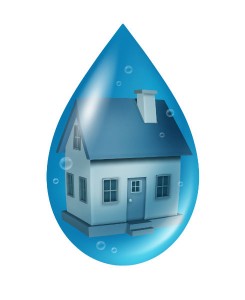Waterproofing a Chimney
The chimney is the least thought about and most exposed to the natural elements of any house. Most brick houses are protected by a roof, yet the chimney sits above the roof and sometimes attached to the side of the house. The natural elements of rain, snow, sleet, freezing rain, and freeze/thaw cycles wear and tear on masonry and brick over time. Masonry is porous by nature, and over time without proper maintenance and care can render thousands in structural repair costs.
One procedure to ensure the longevity and structure of a chimney and masonry is waterproofing. Waterproofing masonry, especially something like a chimney, is no easy procedure and requires several steps. Most waterproofing of a chimney or masonry should be done by a professional to ensure proper techniques and is the soundest option. If you have any cracks in the masonry, have it inspected by a professional right away.
These steps must be taken and might help understand this procedure if it is suggested by a chimney professional:
- Measure – material must be purchased to clean and seal the masonry, so proper measurement is required for these materials.
- Cleaning – Dirt, creosote, mold and other contaminants must be cleaned off of the masonry properly before sealing. Special masonry cleaner is needed.
- Masking – this is simply protecting areas of overspray of the sealer. Special care must be taken to secure drop cloths in proper areas.
- Minor Chimney Repairs – some openings in the mortar might be too large for a general sealer and will need to be addressed separately. Any opening under 1/8” can be filled with Crack & Joint Sealant. Three to four days will be necessary to allow the minor sealant to fully cure. Any brick replacement or crack over 1/8” will need to be repaired by a masonry professional.
- Apply Water Repellant – water repellent is sprayed on bricks and mortar using a pump garden type spray nozzle. Repellent is applied going from the bottom to the top moving side to side. A brush might be necessary to break the tension of the repellent to get it fully penetrate the masonry. The deeper the sealant can penetrate helps the longevity and effectiveness of the water protection. A second coat can be applied in as little as 3-5 minutes, but will also darken the look of the masonry. Fully dry time will be 2-6 hours depending on weather conditions. A long dry window of 6 hours of no rain is necessary.
- Clean up – Drop cloths will need to be removed as well as the pump sprayer cleaned out with soap and water.
So the process may take a few days or more for minor cleaning, masking to be applied, minor repairs to be applied and cured, and a dry weather window. In the end, the waiting is worth it and a waterproofed chimney is a happy chimney and will last many years and better protected from the elements.

